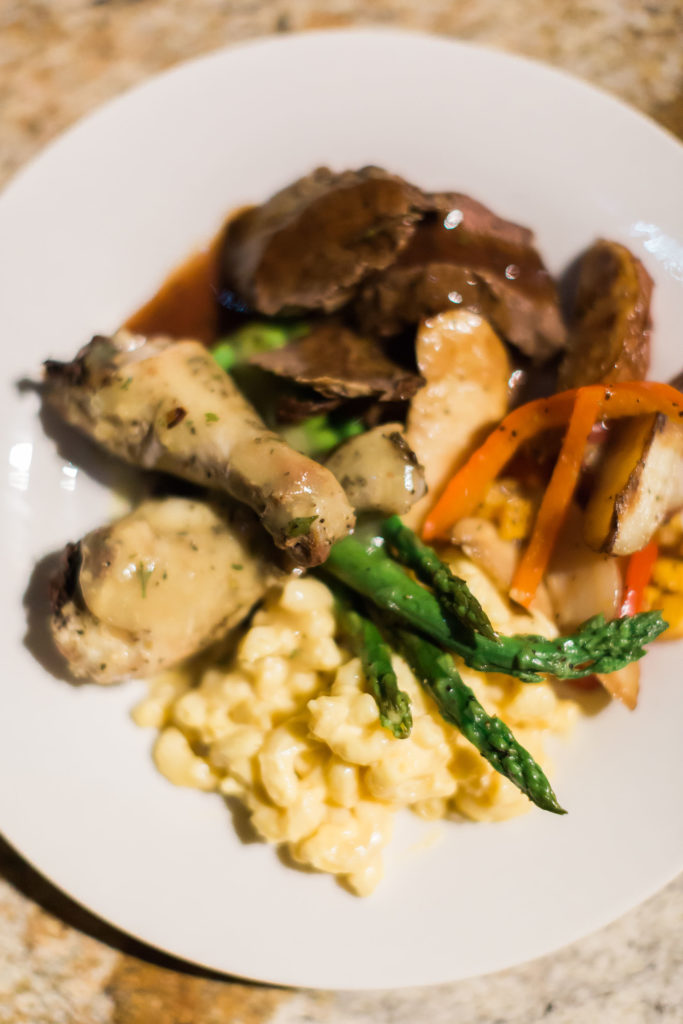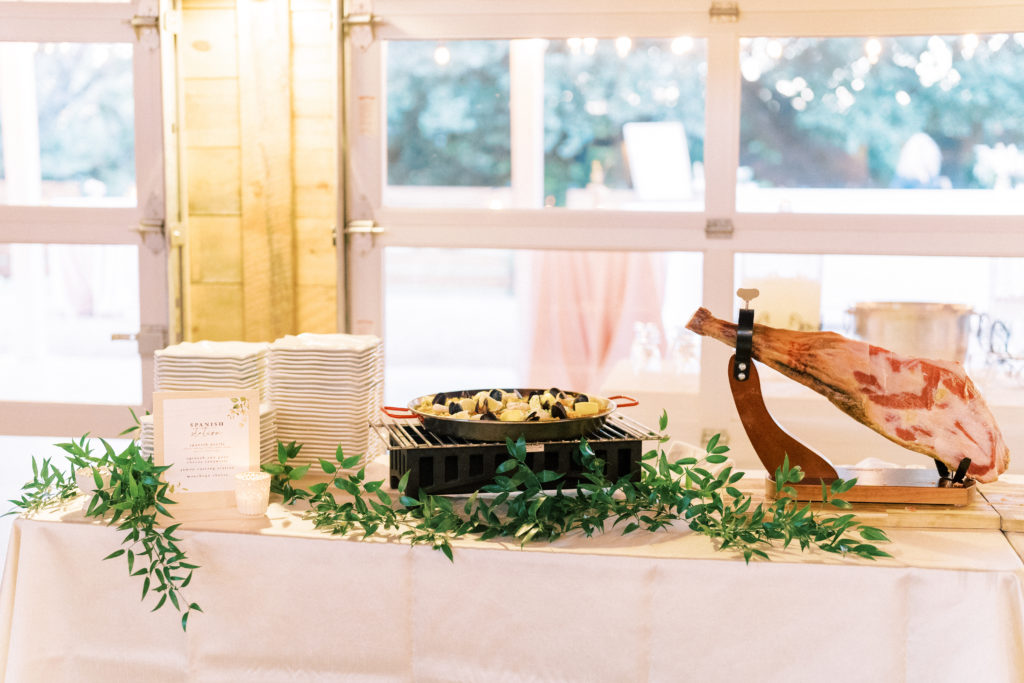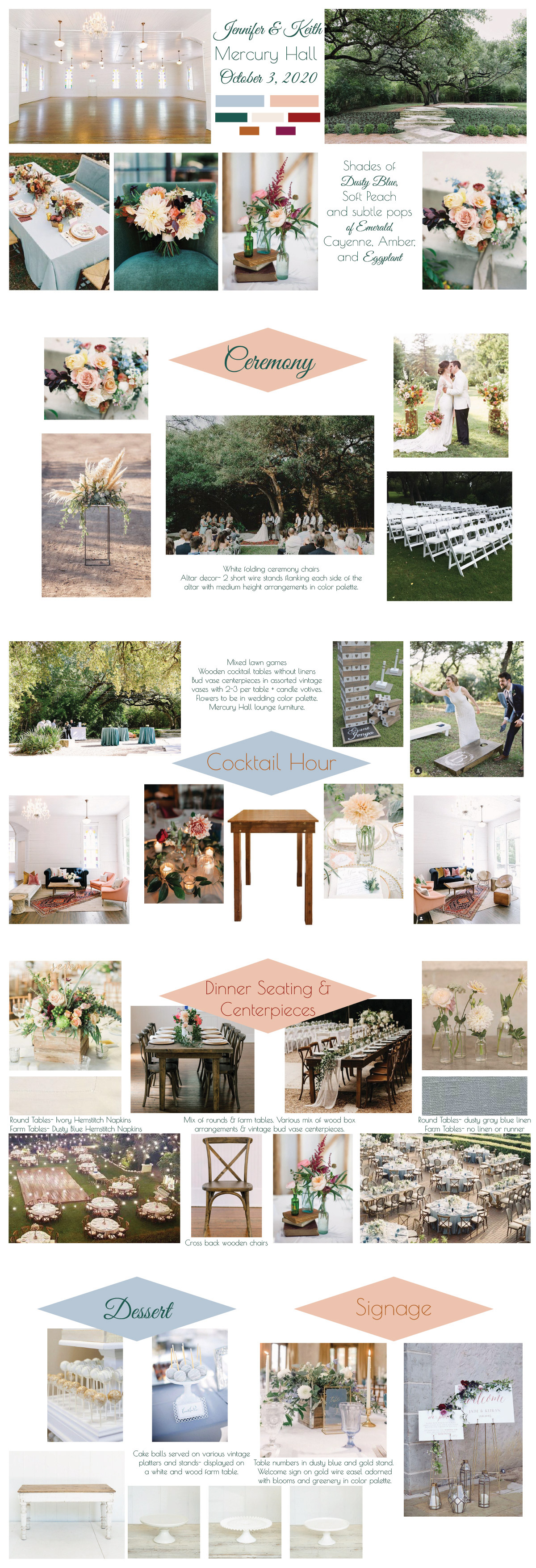Food is such an integral part of your wedding day, and every couple has their own preference on style and taste. The type of catering service you choose can shape the flow of your wedding reception and help dictate the “feel” of the evening.
There are five different wedding catering styles, each with their own pros and cons, which we’re going to break down for you today. Some catering companies do specific styles particularly well and others may not offer some styles of service, so if you’re set on any one specifically make sure to mention that up front.
Wedding Catering Styles~ Pros and Cons

Plated
With a plated meal you have the option of choosing one entrée for all your guests or offering your guest choices and having them RSVP with their entrée selection. This is traditionally a more formal style dinner service.
Pros- A plated meal offers a more formal and elevated feeling. This also offers a more structured dinner timeline.
Cons- This option could cost you more due to the added labor needed for serving a plated meal to a large group.
You may need to rent charger plates to have a full table place setting because the salad & entrée plates are being used in the kitchen.
If you’re offering guest entrée choices, you will have to collect their entrée RSVPs and provide that information to the catering company along with guests table assignment so that the meal service can run smoothly.
Pro Tip- Uptown clients get access to a great entrée and seating assignment tracking tool!

Buffet
A Buffet style catering service is common for a more casual atmosphere while also offering your guests more options.
Pros- You can offer a wider variety of food choices. Guests are able to build their own plates and can avoid certain foods based on their preferences or allergies. You do not have to ask guests to RSVP with their entrée selection.
Cons- Serving large groups from buffets can be timely, so we highly suggest doing multiple buffets and having them be double sided to allow the maximum number of guests to be served at a time.
This catering style does allow you to have entrée plates down at each place setting, however this does require your DJ/MC and planner to inform guests that they will need to carry their plates to the buffet. Or plates can be on the buffet.
Pro Tip- You can offer a plated salad course and then buffet service for the remainder of the meal to blend styles.

Stations
A station style catering service is similar to a buffet in that it includes food displays where guests can either help themselves or be served. However with stations, the food display tables are typically spread out into different areas and are more small plate style where guests fill a small plate at one station then sit down to eat. Then they later get up and fill another small plate then sit down to eat again. Rinse & repeat 😉 Stations are usually themed with each table having a different style of food. Stations work nicely for a mix & mingle type vibe.
Pros- You can choose unique themes for each station and you do not have to collect guests entrée RSVPs.
Cons- In order for stations to work effectively you have to spread the food stations out and explain to guests that they are intended to dine small plate style and come back for seconds and thirds. If guests don’t understand this style, dinner can feel a bit awkward and confusing.
Station style service can be a little more pricey as you are offering multiple styles of food to feed each guest with portion sizes for everyone even though not everyone will partake in all the station items.

Family Style
With this style of catering service, guests are seated like with a plated meal and multiple trays of food are placed in the center of the table for guests to pass around and serve themselves.
Pros- This style of service creates an intimate setting & opens up conversation. Dinner plates are down at each individual place setting, and guests are able to build their own plates based on their preferences.
Cons- Guests are serving themselves and having to pass around trays of food, so there can be a bit of fumbling around with serving utensils.
Your table centerpieces need to be designed with the intention of being small to allow for ample space for the food trays to be sat in the middle of the tables.
Russian Style (or sometimes referred to as “Butler Passed”)
This is the newest food service style that I’m particularly fond of for rehearsal dinners. Russian style catering is very similar to family style but instead of guests passing the trays around, servers go around to each guest and serve them tableside.
Pros- You get the charm of Family style without the cumbersome aspect of guests having to fumble with trays of food & serving utensils. Dinner plates are down at each individual place setting. And you don’t have to collect guests entree RSVPs.
Cons- This style of service usually takes a little longer as it requires more staff and time to serve all guests. Due to the higher number of staff, you may incur additional catering fees.
No matter what wedding catering styles of service you choose, our goal is to make dinner on the most memorable evening of your life, a smooth and enjoyable experience. If you still need more guidance on selecting the best service style for your wedding, your Uptown Planner can help.
By: Jessica Upton





